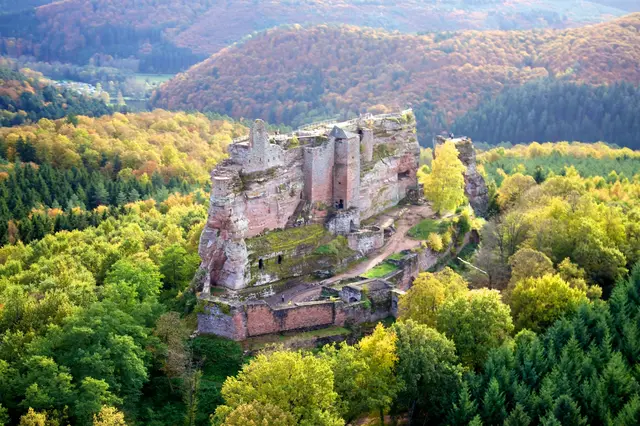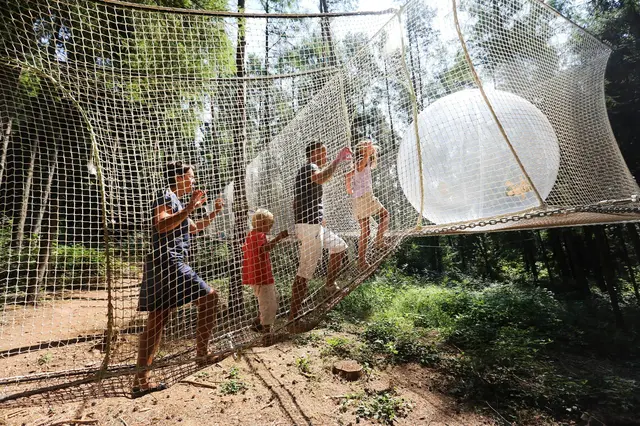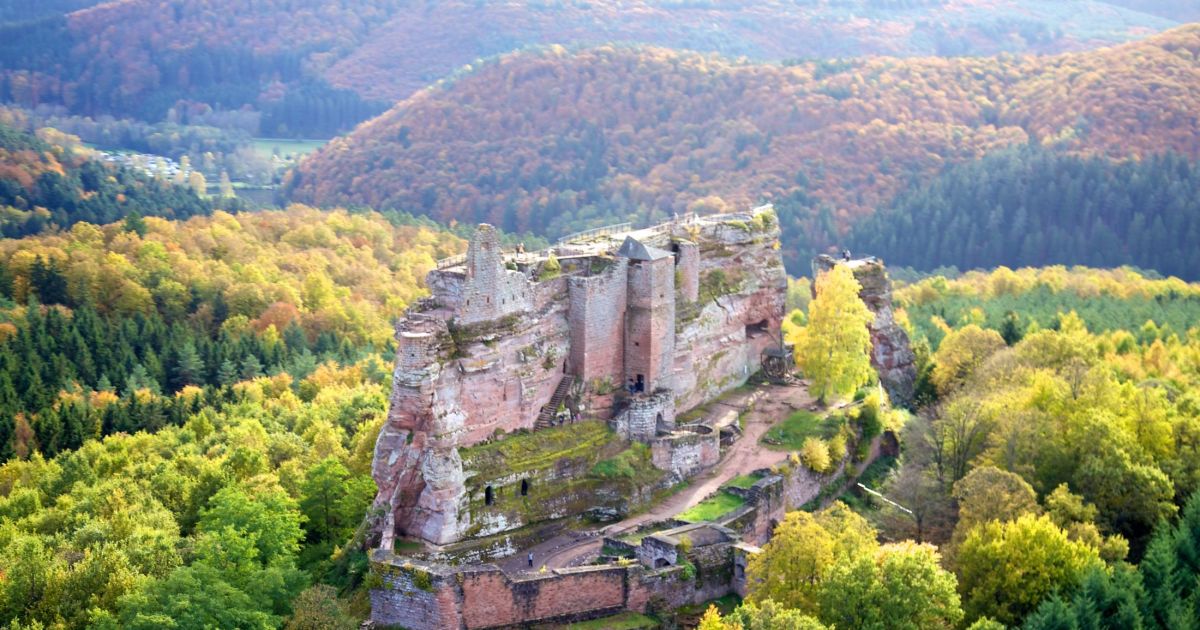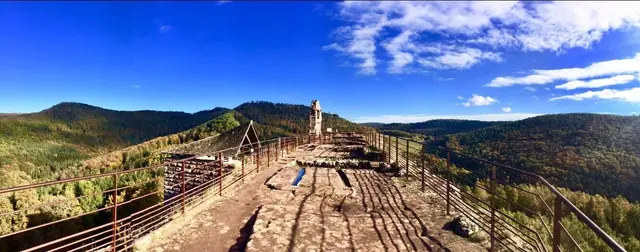Located in the heart of vast forests, a legendary castle, Fleckenstein, watches over! Giant emblematic of the Northern Vosges, visitors set out to conquer the summit by penetrating into the heart of the rock while families embark on a 3-hour medieval adventure “the Château des Défis®”. All are rewarded with a unique atmosphere and a breathtaking view in authentic and natural Alsace.

© K. GROß
Fleckenstein Castle dominates the surrounding forest
Visit Fleckenstein Castle
Free tour
The castle, nestled in a spectacular rock, shows extraordinary dimensions that are evident only once at the foot of the surrounding walls. Guided by reconstructions of the monument that overlap the past with the present, the visitor discovers exemplary military architecture and water management, and immerses himself in the history of the family saga in the gallery of ancestors. Then, he unleashes his imagination advancing through the extraordinary labyrinth of rooms and stairs in the very heart of the arena and reaches the top, not without having admired the prowess of the builders of other times. The sublime landscapes of the parks of the Northern Vosges and the Palatinate were then offered to him.
A visit document is given at the ticket office, the guided tour is available on reservation.
Fun discovery: the new scenery of the Château des Défis®

© Dr
Discover the Château des Défis® with the family!
“It all started with the theft of a grimoire! This contained the formula that allows you to turn iron ore into gold, … Since this vile act of greed, darkness and the worst calamities have fallen on the lands of Fleckenstein. Kim comes to the rescue.”
Your mission, if you accept, will be to help Kim restore the balance of the world, find the alchemist’s grimoire and free Baron Fleckenstein. After trying to keep the colors on the lands of Fleckenstein, you will be propelled into the unfathomable world of Legends. You have to manage to escape to start your ascent towards the castle. On your way, you will find the giant, guardian of the forest, dwarves in the pay of the knight-robber, or even graceful sylphs…
Courage, logic, agility, recourse to the 5 senses… these are the main ingredients of a quest that promises to be breathtaking and that brings the whole family together – the older ones help the younger ones, when it’s not the other way around . around!
The route is also an opportunity to discover some of the legends linked to the fortified castles of Alsace and the Palatinate and to acquire the keys to understanding medieval history and daily life in the Middle Ages.
Together, you will tease your brain and your muscles for a visit to the castle that is as fun as it is enriching and brings together all generations in a beautiful moment of relaxation and conviviality!
The history of Fleckenstein Castle
Its history is closely linked to that of Alsace, which was part of the Holy Roman Empire until its gradual attachment to France. To 12th century the Hohenstaufen emperors established their authority over the region by assigning imperial fiefs to their most loyal (ministerial) vassals. This is how Frederick I of Hohenstaufen, known as Barbarossa, most likely awarded Gottfried from Fleckenstein entrusting him with the homonymous castle, whose government will be ensured by his descendants for more than five centuries.
The high positions entrusted to the ministers will allow the Fleckensteins to rise in society and get rich to finally emancipate themselves from their primitive lord and become the most powerful and prestigious family in Lower Alsace. After a particularly prosperous period in the 15th and 16th centuries, the fortress ended up being outgrown and abandoned by the family who lived more comfortably in the plain between Heidelberg and Strasbourg.
Attached to France, the fortress was evaluated by the administration that did not include it in Vauban’s vast modernization program and decided to demolish it to exclude any possibility of resistance. When in 1680, Louis XIV’s soldiers appeared under the walls, they met no resistance and blew up the manor house with black powder. With the death of the last baron without a male successor in 1720, the remains were abandoned and the land had successive owners.
In the 19th century, the romantic movement raised tourist interest in this “sleeping beauty” and the The castle was classified as a historical monument in 1898. Then begins the work of consolidation and security that will turn it into a major tourist center appreciated by lovers of old buildings and wide open spaces, as well as princesses for a day and knights in sneakers.

